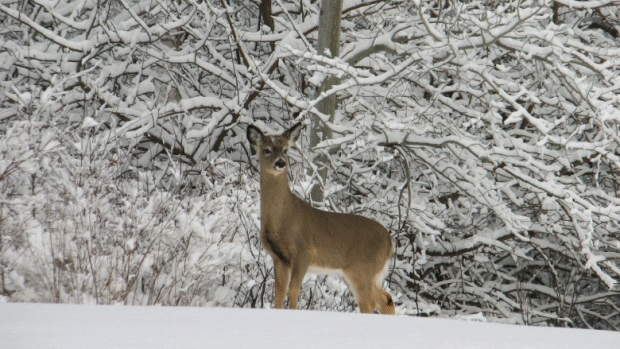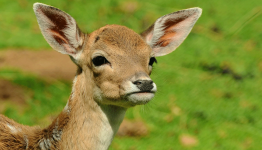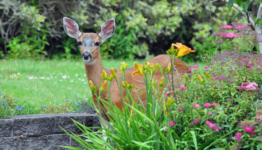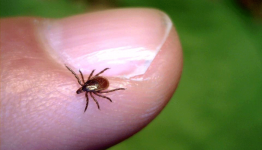Deer, being herbivorous in nature feed mostly on vines, twigs, leaves and shoots of woody plants. Also, broadleaf flowering plant and weeds are one of their favorite delicacies. They only feed on succulent and tender grass. Deer have a hard time finding food during late summers and winters, and will sometimes have to compete with sheep and goats for food.
They experience abundance during fall and spring as both seasons are characterized by intense rainfall. The population of deer thrive in areas with sufficient food.
Deer feed on different types of plants, feeding on one particular type during certain times of the year. Their choice of food often depends on the environmental conditions they find themselves in. Below are some of the common plants fed upon by deer:
Browse: This includes wild grape, sumac, acacias, chinaberry, oak leaves, yaupon, mulberry, wild cherry, dogwood, blackberry, walnut, American beautyberry, and dewberry. They may occasionally feed on other plants outside the afore-mentioned ones.
Forbs: This include bayflower, clover, wild lettuce, lamb’s quarters, carelessweed, spiderwort, plantain, wild onions, verbena and lots more.
Grasses: Witchgrass, sedges, rescue grass, rushes, wheat, oats, cultivated rye, to name but a few.
The whitetail deer prefer feeding on nutritious plants, but will feed on any other available food if their favorites aren’t available. Their stomach has four sections, and each contains protozoans and bacteria which aid the digestion of stubborn fibrous plants they eat. Their dentition is made up of 6 set of incisors located at the lower part of their mouth. They use their incisor together with their mouth pads to strip and crush tough stems of plants they feed on. They leave the plants they feed on with frayed edges when they have eaten to their fill. Oftentimes, they cause shrubs and samplings to develop a witches’-broom effect due to their repeated feeding.
When reaching for plants far above them, whitetail deer will stand with fore limbs raised upwards. This feeding habit of theirs makes the foraging animal capable of taking down twigs and foliage at a height of 6 ft. Deer when they browse through woody swamps distort the physical appearance of plants. Being selective in nature, the whitetail deer oftentimes feed on shrubs and trees like sugar maple, scarlet alder, yellow birch, mountain ash etc. which are all crucial to the regeneration of the forests. The feeding habit of the whitetail deer affects the Adirondack forests in more ways than one.
During summer, this herbivorous animal feeds on fungi and herbaceous plants, turning to beechnuts and acorns during autumn and winter. Occasionally, they may feed on dry grasses and leaves. In the dead of winter, their meals come from shrubs, sapling, stems, twigs and seedlings. They favor plants in scarlet elder, sumac, bush cranberry, birches, American yew, maples, white pine, scarlet elder and witchhoble. Plants like spruce, larch and balsam fir are too tough for their digestive system to tackle or just unpalatable. During spring, they feed on twigs, buds, and woods of herbaceous plants.
To sustain their body needs, whitetail deer requires 5 to 7 pounds of food on daily basis. The body of the females, especially during pregnancy require higher energy intake, while that of the male deer does so during autumn. But during winter, their energy demand is the same.
Their body metabolism dips during winter, and climbs during summer. In the dead of winter, their energy demands are met by conserved fat and browsing. Severe winter seasons like the Adirondack winter which sometimes lasts for 100 days can adversely reduce the population of the whitetail deer.
If you want your area free of deer today, try the Nature’s Mace Deer Repellent. Backed by numerous university studies, this all natural formula has more of the strongest ingredients found in nature.
The technology uses a unique three prong repellency which targets the deers sense of taste, smell, and fear. Specifically chosen organic ingredients, also fertilize your your yard as a dual action repel and revive system. Click here to try a proven effective deer repellent!











